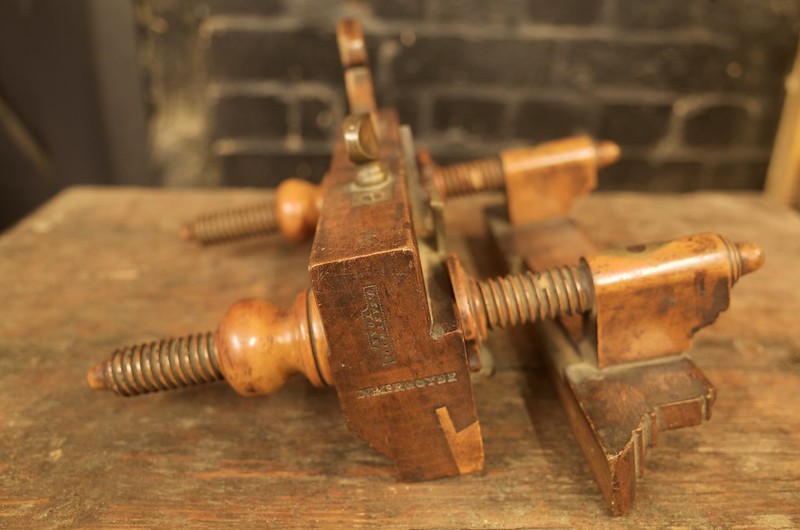Rhyolith
Established Member
Found this pretty thing at the car boot few weeks back. Its missing its main blade but think everything else is there.
 19th Century Sash Fillister Plane by G. Eastwood by Rhyolith, on Flickr
19th Century Sash Fillister Plane by G. Eastwood by Rhyolith, on Flickr
Got the usual questions:
Age?
Maker?
Anything else interesting about these tools I should know? I have minimal knowledge of these.
 19th Century Sash Fillister Plane by G. Eastwood by Rhyolith, on Flickr
19th Century Sash Fillister Plane by G. Eastwood by Rhyolith, on Flickr
 19th Century Sash Fillister Plane by G. Eastwood by Rhyolith, on Flickr
19th Century Sash Fillister Plane by G. Eastwood by Rhyolith, on Flickr
 19th Century Sash Fillister Plane by G. Eastwood by Rhyolith, on Flickr
19th Century Sash Fillister Plane by G. Eastwood by Rhyolith, on Flickr
I must admit, it was one of the finest patinas I have seen to date, alright for £20 I thought.
I've done nothing to it but a bit of dusting.
 19th Century Sash Fillister Plane by G. Eastwood by Rhyolith, on Flickr
19th Century Sash Fillister Plane by G. Eastwood by Rhyolith, on Flickr
Edit: post corrected from "Plow Plane" to "Sash Fillister Plane"
 19th Century Sash Fillister Plane by G. Eastwood by Rhyolith, on Flickr
19th Century Sash Fillister Plane by G. Eastwood by Rhyolith, on FlickrGot the usual questions:
Age?
Maker?
Anything else interesting about these tools I should know? I have minimal knowledge of these.
 19th Century Sash Fillister Plane by G. Eastwood by Rhyolith, on Flickr
19th Century Sash Fillister Plane by G. Eastwood by Rhyolith, on Flickr 19th Century Sash Fillister Plane by G. Eastwood by Rhyolith, on Flickr
19th Century Sash Fillister Plane by G. Eastwood by Rhyolith, on Flickr 19th Century Sash Fillister Plane by G. Eastwood by Rhyolith, on Flickr
19th Century Sash Fillister Plane by G. Eastwood by Rhyolith, on FlickrI must admit, it was one of the finest patinas I have seen to date, alright for £20 I thought.
I've done nothing to it but a bit of dusting.
 19th Century Sash Fillister Plane by G. Eastwood by Rhyolith, on Flickr
19th Century Sash Fillister Plane by G. Eastwood by Rhyolith, on FlickrEdit: post corrected from "Plow Plane" to "Sash Fillister Plane"



